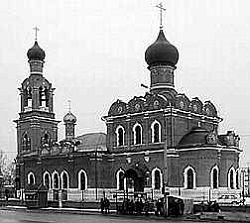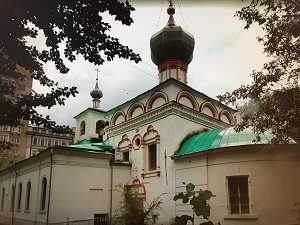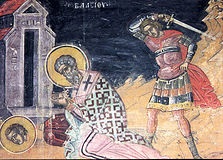One day our friend Tatyana who arranges guided tours in Moscow called us to ask if we would be interested in a new walking tour in the centre of Moscow, and later in assessing the tour. My wife Saroj and I gladly accepted Tatyana’s invitation.
Our tour guide that day was a professor of History who knew much more than regular guides about all the places we visited. When we live in a place for a long time, we start taking its surroundings and sights for granted, paying little attention to them. Once when I had met the painter Svetoslav Roerich in his residence in Bangalore, he mentioned that even after spending his whole life in India, he encountered something new every day about the multifaceted culture of the country. This is as much true of India as Russia.
Despite being well versed in history and having deep knowledge about Moscow, the professor had planned and prepared for the tour in great details
. Our excursion started from the Gogol square situated along the boulevard ring and continued to Old Arbat Street. We were amazed to learn that every house located in the heart of the city speaks a history of its own and has many facts embedded in its fold. These silent structures standing for few centuries have many stories to tell; one simply has to lend an ear to them.
Our outing that day was delightful, informative and memorable. However, the prevailing situation in the world today has brought back a story that I heard on that trip.

My story is about the Temple of Holy Martyr Baise, on Old Konyushnaya Street. During the virulent cholera epidemic in Moscow, which started in September 1830, the mortality rate was high and kept rising rapidly each day. No doctor or official was able to help control the situation. People had preserved food for the approaching winter, which used to be quite severe those days.

There was no way to establish which food was contaminated and which was safe to consume. As statistics go, the outburst of the epidemic took 2340 lives in Moscow. Most of the high ranking officials were able to escape the outbreak by moving to St. Petersburg and other cities. The Emperor, Nicolai I, worked tirelessly and diligently fearing an outbreak of riot, such as the one caused by the plague of 1771. Trade in the city had come to a standstill; banks were unable to function normally. Parties and merriment in high society were banned.

Russia, at that time, was a conservative God-fearing country. Everyone in the city was seeking God’s blessings to stave off the dreaded disease. There were long queues outside all churches, and Temple of Holy Martyr Baise was no exception. People lined up on the street for hours in the cold weather. Undoubtedly, infected and sick people were also there amongst those waiting outside the churches. Reaching the altar, every devotee prayed hard, reverently, kissing the icons repeatedly. There was delay and much jostling as everybody waited for their turn to invoke the supreme power. Despite all precautions, the epidemic’s severity kept on increasing.

One day, a young priest realized that the crowds queuing outside the churches and praying for prolonged periods inside the temples were the carriers of infection, and their kissing of the icons was the leading cause of contamination and spreading of cholera virus. He then decided to close the church and pleaded people to stay home. This was not acceptable to the faithful devotees. They believed that God alone could save them. The situation soon became very tense. The crowd, in their desperation to have a meeting with God, started beating up the priest in order to remove him from the path to the entrance of the church. The priest knew well what he was doing. He stood firm in his decision and fought till his last breath, not allowing the crowds in. It was too late by the time people realized the noble intent of the priest. Today, the church’s main icon is that of the priest, and he is worshipped fervently.
In today’s epidemic situation, the Chinese Government has asked people to stay confined in their homes to contain the spread of the outbreak. We all hope that with collective action and wise steps, humanity will soon be able to overcome the crisis called corona virus.
Santosh works and lives in Moscow

Good reading.
Ganashatru (Bengali: গণশত্রু Gônoshotru “Enemy of the People”) is a 1990 Indian film directed by Satyajit Ray. It is an adaptation of Henrik Ibsen’s play An Enemy of the People. The film depicts similar situation.
Very intelligently connected the two situations. Well expressed Mr.Santosh.
Thanks so much Mr. Santosh – your story is very impressive!
Best of luck i wanted to comment 1st ans i did it.